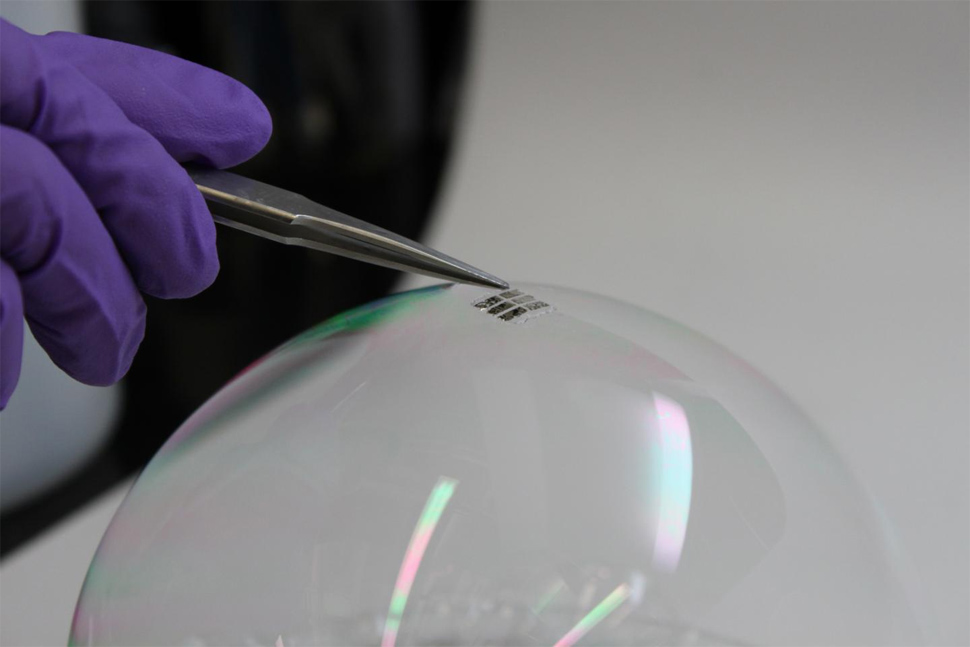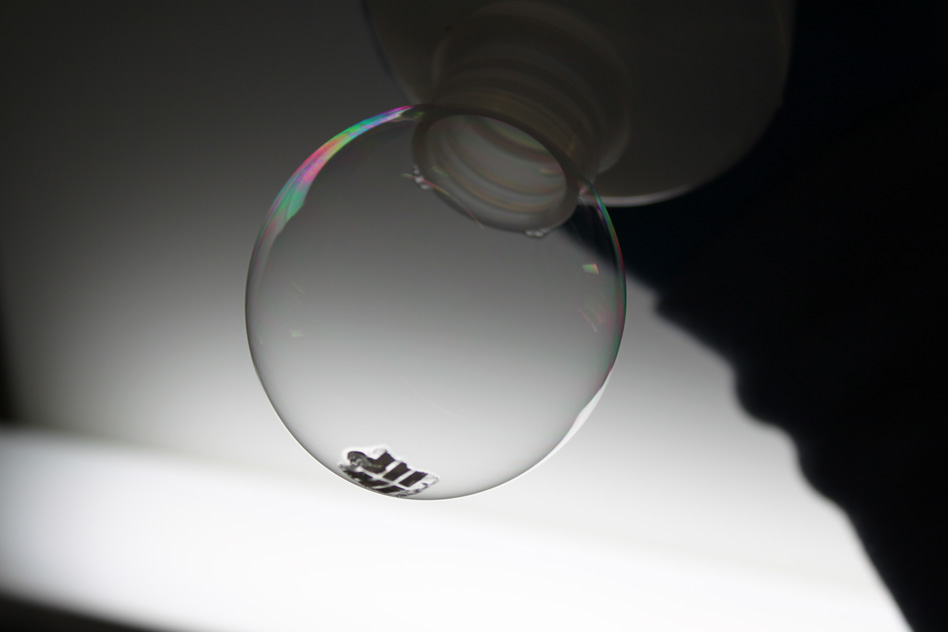
29th February 2016 Thinnest and lightest solar cells ever made A solar cell so thin, flexible, and lightweight that it can be draped on a soap bubble has been demonstrated by MIT.
Imagine solar cells so thin, flexible, and lightweight that they could be placed on almost any material or surface, including your hat, shirt, or smartphone, or even on a sheet of paper or a helium balloon. Researchers at the Massachusetts Institute of Technology (MIT) have now demonstrated just such a technology: the thinnest, lightest solar cells ever produced. Though it may take years to develop into a commercial product, this laboratory proof-of-concept shows a new approach to making solar cells that could help power the next generation of portable electronic devices. The new process is described in a paper by Professor Vladimir Bulovic, research scientist Annie Wang, and doctoral student Joel Jean, in the April 2016 edition of the journal Organic Electronics. The key to their technique is making the solar cell, the substrate that supports it, and a protective overcoating all in one process. The substrate is made in place and never needs to be handled, cleaned, or removed from the vacuum during fabrication, thus minimising exposure to dust or other contaminants that could degrade the cell's performance. "The innovative step is the realisation that you can grow the substrate at the same time as you grow the device," Bulovic says. In this initial proof-of-concept experiment, the team used a common flexible polymer called parylene as both the substrate and the overcoating, and an organic material called DBP as the primary light-absorbing layer. Parylene is a commercially available plastic coating used widely to protect implanted biomedical devices and printed circuit boards from environmental damage. The entire process occurs at room temperature, without using any solvents – unlike conventional solar cell manufacturing that requires high temperatures and harsh chemicals. In this case, both the substrate and the solar cell are "grown" using established vapour deposition techniques. The team emphasises that these particular choices of materials were just examples, and that it is the in-line substrate manufacturing process that is the key innovation. Different materials could be used for the substrate and encapsulation layers, and different types of thin-film solar cell materials including quantum dots or perovskites could be substituted for the organic layers used in initial tests. But already, the team has achieved the thinnest and lightest complete solar cells ever made, they say. To demonstrate just how thin and lightweight the cells are, the researchers draped a working cell on top of a soap bubble, without popping the bubble.
The complete solar cells, including substrate and overcoating, are just 1/50th of the thickness of a human hair and 1/1000th of the thickness of equivalent cells on glass substrates – two micrometres thick – yet they convert light into electricity just as efficiently as their glass-based counterparts. "We put our carrier in a vacuum system, then we deposit everything else on top of it, and then peel the whole thing off," explains Wang. While they used a glass carrier for their solar cells, Jean says "it could be something else. You could use almost any material," since the processing occurs under such benign conditions. The substrate and solar cell could be deposited directly on fabric or paper, for example. While the solar cell in this demonstration device is not especially efficient, because of its low weight, its power-to-weight ratio is among the highest ever achieved. That's important for applications in which weight is a vital factor – such as on spacecraft, aeroplanes, or high-altitude balloons. Whereas a typical silicon-based solar module, whose weight is dominated by a glass cover, may produce about 15 watts of power per kilogram, the new MIT cells have already demonstrated an output of 6 watts per gram – about 400 times higher. "It could be so light that you don't even know it's there, on your shirt or on your notebook," says Bulovic. This is still early, laboratory-scale work, and developing a mass-produced, commercial version will take time. Yet while success in the short term may be uncertain, this work could open up dramatic new applications for solar power in the longer term. "We have a proof-of-concept that works," Bulovic says. The next question is, "How many miracles does it take to make it scalable? We think it's a lot of hard work ahead – but likely no miracles needed." "This demonstration by the MIT team is almost an order of magnitude thinner and lighter than the previous record holder," says Max Shtein, a professor of materials science and engineering at the University of Michigan, who was not involved in this work. "It has tremendous implications for maximising power-to-weight (important for aerospace applications, for example), and for the ability to simply laminate photovoltaic cells onto existing structures." "This is very high quality work," Shtein adds, with a "creative concept, careful experimental set-up, very well written paper, and lots of good contextual information." And, he says, "The overall recipe is simple enough that I could see scale-up as possible." ---
Comments »
|








